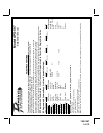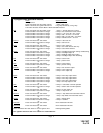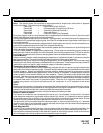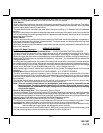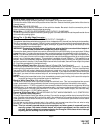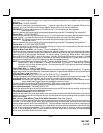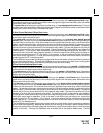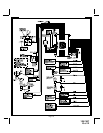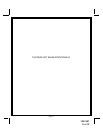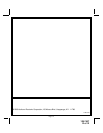
128-7407
4 of 12
Page 4
INSTALLATION OF MAJOR COMPONENTS
Note: This system allows the transmitter to be programmed for single button lock/unlock or separate
button lock/unlock. The receiver is set up as follows:
Channel #1 = Lock/Unlock/Unlock 2 &Panic
Channel #2 = If Programmed, Unlock/Unlock 2 & Panic
Channel #3 = Channel 3 & Alternate Channel 3
Channel #4 = Channel 4 Output
Channel #5 = Channel 5 Output (If so Equipped)
During the program routine, if a transmitter button is programmed into receiver channel 2, then the unit will
always have separate lock/unlock from that transmitter.
If during the program sequence receiver channel 1 is programmed, and received channel 2 is skipped over,
as indicated in the transmitted program guide, then the unit will operate as a single button lock/unlock unit
from that transmitter.
It is possible to have one transmitter programmed for single button lock/unlock, and one transmitter pro-
grammed for separate button lock/unlock if the customer so desires.
If you inadvertently incorrectly program the transmitter, please read the information on re-prioritizing found
in the transmitter programming guide.
This unit is also capable of single button programming. Simply enter the transmitter program mode and
press the lock, channel one button for each transmitter, then exit the program mode. This action sets the
transmitters for seperate lock/unlock as well programs the trunk release button and the option button.
Control Module:
Select a mounting location inside the passenger compartment ( up behind the dash ), and secure using the
two screws provided. The control module can also be secured in place using cable ties.
Do not
mount the control module in the engine compartment, as it is not waterproof. You should also avoid
mounting the unit directly onto factory installed electronic components. These components may cause RF
interference, which can result in poor transmitter range or intermittent operation.
Transceiver, (Antenna Receiver) Assembly:
The Superheterodyne Receiver Antenna Assembly provided with this unit allows routing from below the
dash board for maximum operating range. Choose a location above the belt line (dashboard) of the vehicle
for best reception. Special considerations must be made for windshield glass as some newer vehicles
utilize a metallic shielded window glass that will inhibit or restrict RF reception. In these vehicles, route the
antenna toward a rear window location for best reception. Secure the antenna with double stick tape
provided. After securing the antenna with tape, we advise also securing a section of the antenna cable to
a fixed support. This will prevent the antenna from dropping down in case the double stick tape is exposed
to extreme heat which may loosen it's gummed surface. Route the 4 pin connector toward the control
module using caution not to pinch the cable as this will cause poor or no RF reception to the control
module.
Siren:
Select a mounting location in the engine compartment that is well protected from access below the vehicle.
Avoid areas near high heat components or moving parts within the engine compartment. To prevent water
retention, the flared end of the siren must be pointed downward when mounted.
Mount the siren to the selected location using the screws and bracket provided.
Hood or Trunk Pin Switch:
A pin switch is included for use in protecting the hood or trunk ( or hatchback ) of the vehicle. The switch
must always be mounted to a grounded, metal surface of the vehicle. It is important to select a location
where water cannot flow or collect, and to avoid all drip gutters on hood and trunk fender walls. Choose
locations that are protected by rubber gaskets when the hood or trunk lid is closed.
The pin switch can be mounted using the bracket provided, or direct mounted by drilling a ¼ “ diameter
mounting hole. Keep in mind that when properly mounted, the plunger of the pin switch should depress at
least ¼ “ when the hood or trunk lid is closed.
Dash Mounted LED:
A small LED is included that will serve as a visual indicator of the alarm status. It should be installed in the
dash, located where it can be easily seen from outside the vehicle, yet not be distracting to the driver.
Once a location has been selected, check behind the panel for wire routing access, and to confirm the drill
will not damage any existing components as it passes through the panel.



